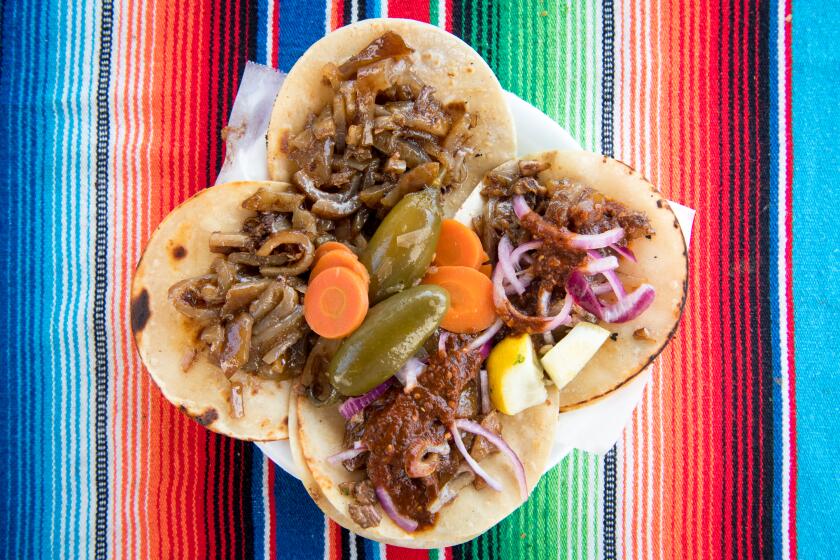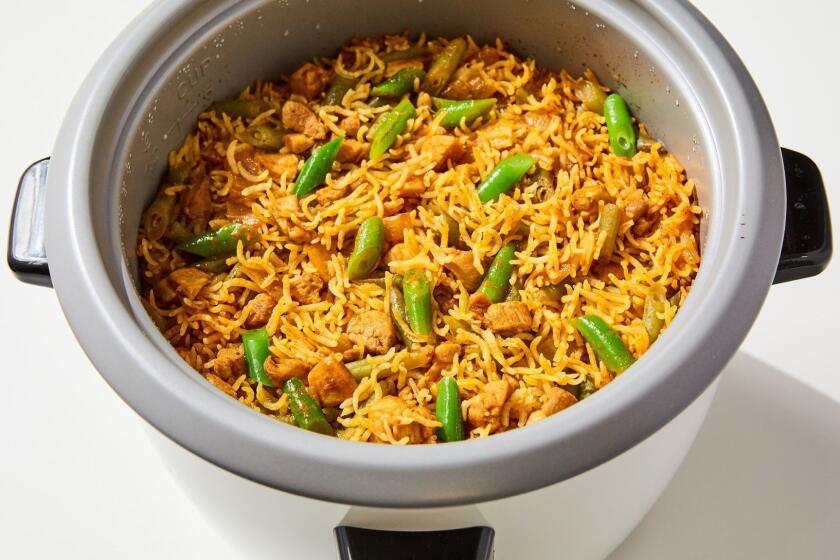Two food writers eat at all the Persian restaurants in SoCal (OK, 18 of them)
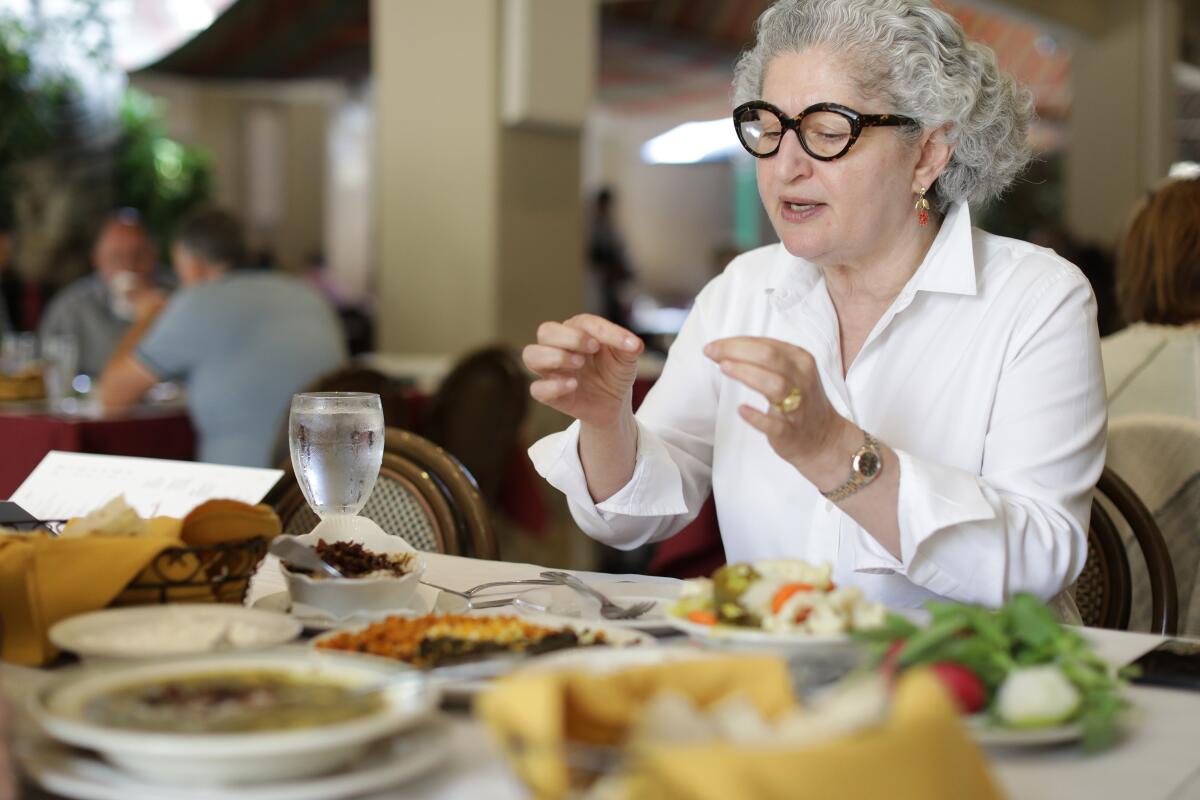
- Share via
Anissa Helou speared a charred, oval slice of grilled donbalan — Farsi for lamb testicle — with her fork and considered her bite. The appearance and texture of the kebab resembled a supple sea scallop, though the flavor had a restrained gaminess, tempered by its smoky edges. “It’s cooked correctly,” Helou said. Then she added: “It’s amazing to be eating this dish in L.A.”
We were having the third of our day’s seven meals — eight if you count a final stop for ice cream — at Attari Grill, an Iranian restaurant in Westwood. The restaurant is the lesser-known adjunct to popular sibling Attari Sandwich Shop; they face each other across a courtyard where customers linger at tables shaded by colorful umbrellas, and they serve similarly meaty menus and grab-and-go foods. But only the Grill prepares donbalan.
Restaurant critic Bill Addison pinpoints seven recent reviews, from a carnitas food truck to a tiny Japanese wonder, that illustrate the city’s amazing dining culture.
Helou is a Lebanese Syrian cookbook author, based in Sicily, who has spent the last two decades tirelessly traveling to research the culinary Middle East and its diaspora. In May, she won a James Beard Award for her 530-page magnum opus, “Feast: Food of the Islamic World.” The dish at Attari amazed her because the offal, while quite common in the Middle East, is too rarely served in America in restaurants of any kind. It was a standout surprise during our recent self-assigned mission: to eat meals at as many of the Iranian restaurants in the Los Angeles metropolitan area as we could manage in our 2½ days together.
All told, we made it to 18 places.
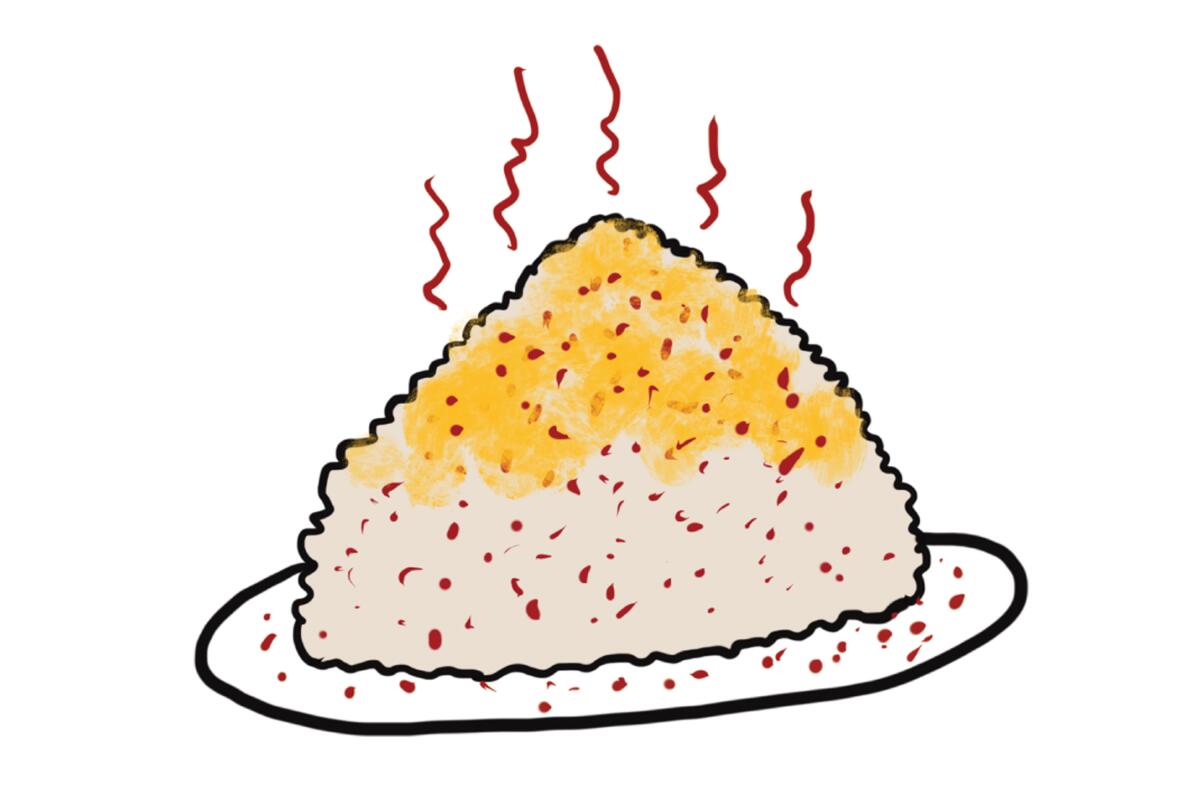
We both wanted to better grasp the city’s Iranian American culture by scaling mountain after saffron-peaked mountain of rice, wading through every possible herbaceous stew and devouring as many different kinds of kebabs as we could find. We collated the most compelling recommendations from colleagues and friends and scarfed down hearty breakfasts, lunches and dinners. Clear champions emerged.
There were dozens, if not hundreds, of options to narrow down. Southern California has the largest Iranian population outside Iran. Community estimates tally 300,000 to 500,000 Iranian American residents in the region; the Census Bureau says Los Angeles is home to 87,000 people of Iranian heritage.
Tehrangeles, as the Westwood-based community has long been nicknamed, began to take shape in the 1960s; it mushroomed with the newcomers who fled Iran in response to the country’s scarring 1979 revolution. The two Attari restaurants reside on a block that received an official designation as “Persian Square” by Los Angeles in 2010, an acknowledgment of how deep the local Iranian American roots have reached.
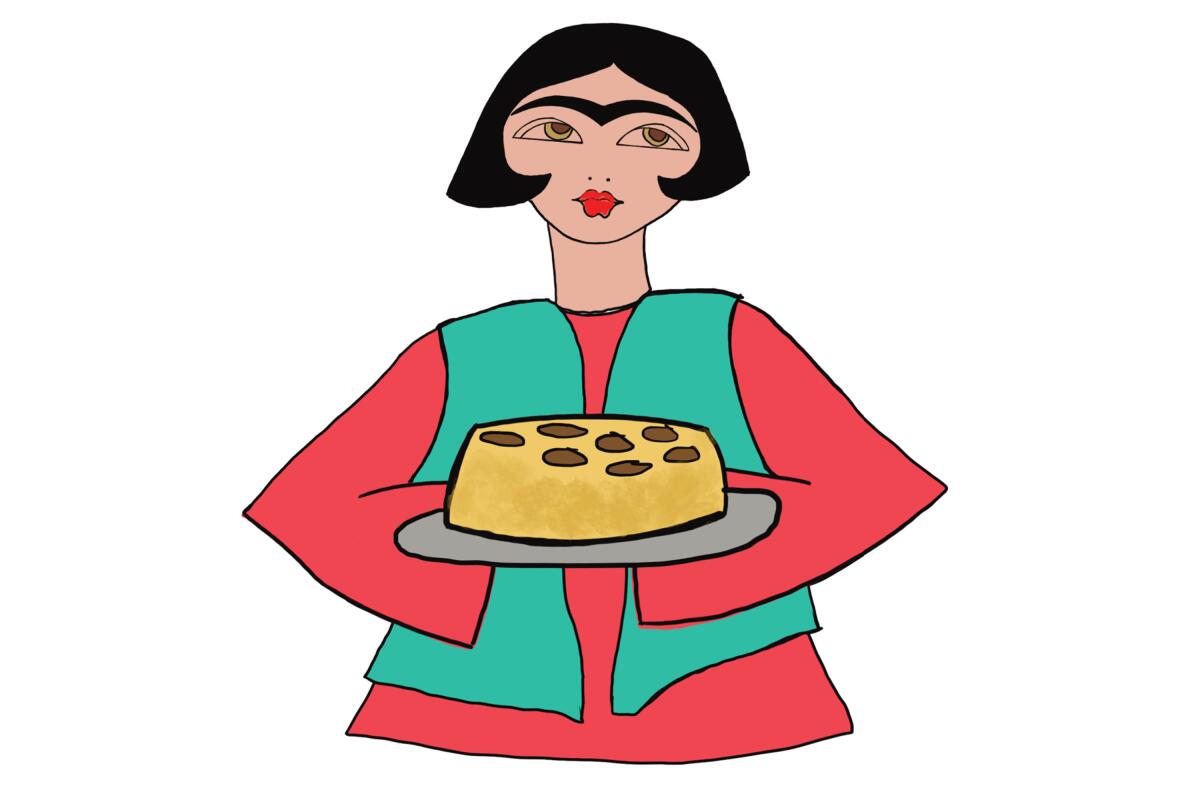
We never saw donbalan offered again. Most of the menus at the other restaurants we visited — in Westwood, Glendale, Irvine and Anaheim — shared a specific sameness. Kebabs, served with drifts of rice, predominate: lamb, beef, chicken, usually a couple of seafood choices. Several stews appear again and again: moss-toned ghormeh sabzi (kidney beans and often lamb or beef simmered with dried lime and half a dozen herbs), sweet-and-sour fesenjan (chicken in a sauce thick with walnuts and racing with pomegranate molasses) and gheymeh (a tumble of spiced tomato, beef and split yellow peas, with fried eggplant or a crown of fried potatoes making frequent appearances). Dips of eggplant and yogurt star as appetizers, as does ash-e reshteh, a fragrant vegetable noodle soup. Cucumbers and tomatoes dominate the salads.
Helou and Iranian American food writers Andy Baraghani and Naz Deravian all boiled down my query about the menus’ universality to the same essence: The khoresh, or stew, is the fundament of Iranian home cooking, with infinite individual, regional and seasonal variations; families and groups tend to go out for kebabs, and the dishes available at the restaurants are meant to have widespread appeal. (I have more on the topic this week in our free critics’ newsletter, Tasting Notes; you can subscribe at latimes.com/tastingnotes.)
Shuffle the pages of Najmieh Batmanglij’s massive cookbook “Cooking in Iran: Regional Recipes and Kitchen Secrets” — a 700-plus-page compendium of the cuisine of Iran that she has mastered over the last three decades — and you’ll find certain ingredients dropped like trail markers.
Yet the more Helou and I ate, the more distinct every restaurant became. We could discern the precise seasoning of the meats (and lack thereof), or the exact thickness of the yogurt dips, or the hoped-for weightlessness of the rice; exceptional specialties leaped out to us.
When dining out, I tend to take experiences at face value and gather context later; Helou is the opposite. Regal and enigmatic, but also kind and slyly mischievous, she strikes a singular presence. She has an extraordinary head of undulating silver hair, like ripples in a pond on a sweltering day when the air above also shimmers in waves. She has many on-the-spot inquiries for servers and owners — about how much oil the kitchen uses for the crispy rice, about where in Iran the owner is from and how long she’s been in America, about the proper consistency of ab-goosht (more on that later). People readily answer the questions; her stately, inquiring disposition usually prompts a few questions of their own.
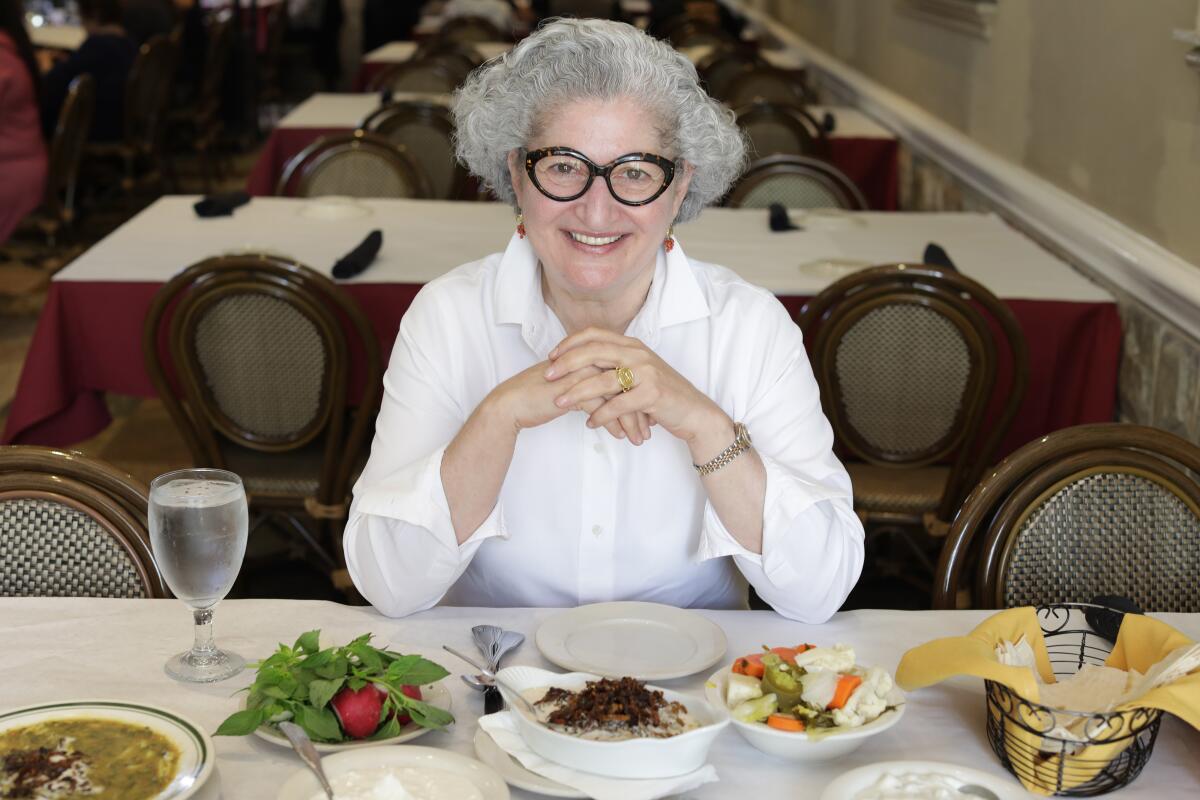
We were in total agreement about the stalwarts that most impressed us. One omission may surprise readers: Raffi’s Place in Glendale, a cherished institution for more than 25 years, which neither of us much enjoyed. It was our first stop, and it was the first time Helou encountered the custom in local Persian restaurants that she doesn’t recall from her trips to Iran: ladling one or two thick stews directly on top of continent-shaped servings of tahdig, the prized crackling, caramelized layer of rice that forms at the bottom of the pot. “Why would they do this?” she cried. “Enjoying the crispness is the whole point. It absolutely ruins the texture.” We encountered stews spooned over tahdig everywhere we ate. Her disdain never relented.
Allow me to introduce you to every Iranian home cook’s secret weapon: the Persian rice cooker, or what I affectionately refer to as my “cheat pot.”
If the cooking at Raffi’s didn’t wow us overall that day, the joyful sense of fellowship among the customers did. “The big groups — the aunts and uncles, the many generations — and it’s absolutely packed on a Tuesday lunch,” Helou said. “We could basically have been in Iran.” Witnessing how these havens nurture community was as important to us as the eating: the boisterous families, the dignified older solo diners, the phonetic melodies of Farsi (and sometimes Armenian; Glendale in particular has a long-established Iranian Armenian population) often chiming through the dining rooms.
With the perfume of meats grilled over charcoal clinging to our clothes, we ranked our five favorite local Iranian restaurants.
Taste of Tehran
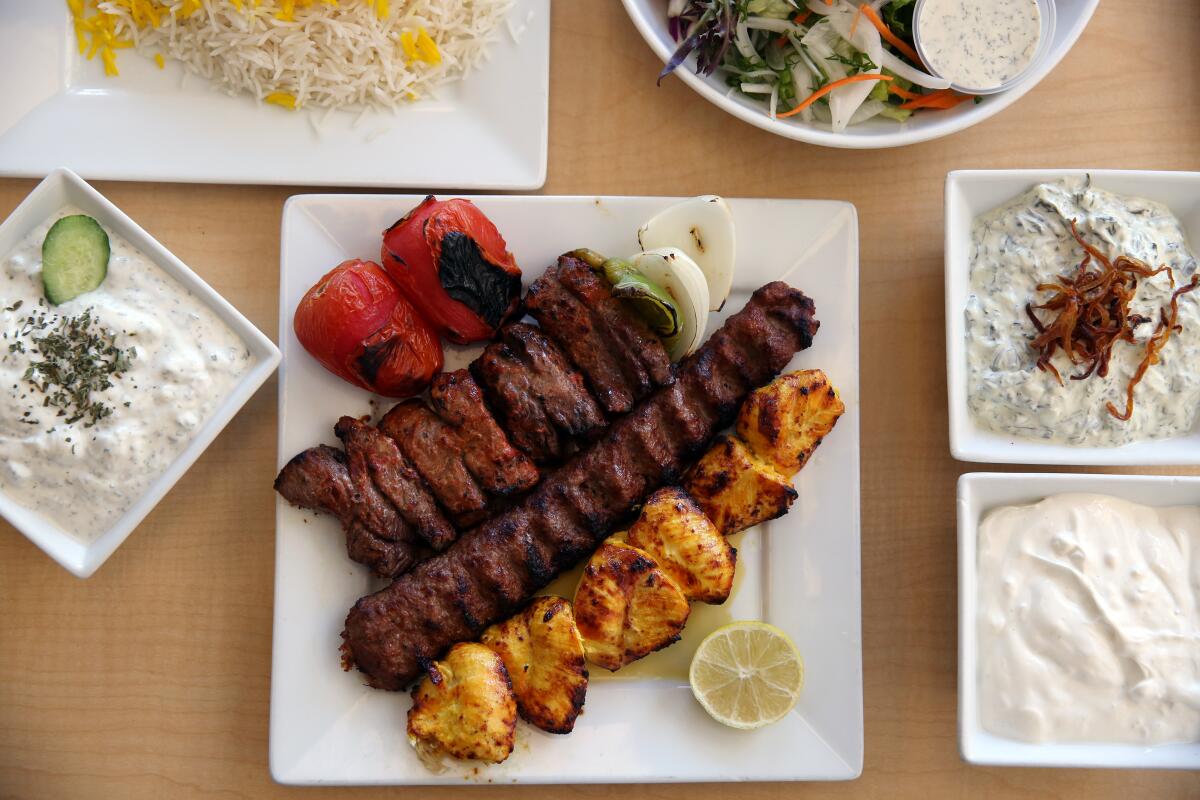
“The quality of the cooking really jumped notably at the smaller restaurants,” Helou pronounced as we finished our meal at this tiny six-table boîte hidden among a thicket of other Iranian American cafes and markets in Westwood. It was our grand finale after 2½ days of eating, but even through our overstuffed fatigue we recognized its superiority.
Chef and owner Saghar Fanisalek grew up in Shiraz, an ancient city in south-central Iran. She moved to the U.S. in 2003 and first worked at Shaherzad, one of Westwood’s longest-standing kebab houses; she opened Taste of Tehran in 2013. Her menu dabbles in modernist lavash wraps and renegade concoctions such as spiced lentil-quinoa salad with raisins and dates, but the heart of her cooking lands squarely in Iranian restaurant traditions: kebabs, rice and dips, all done with uncommon finesse.
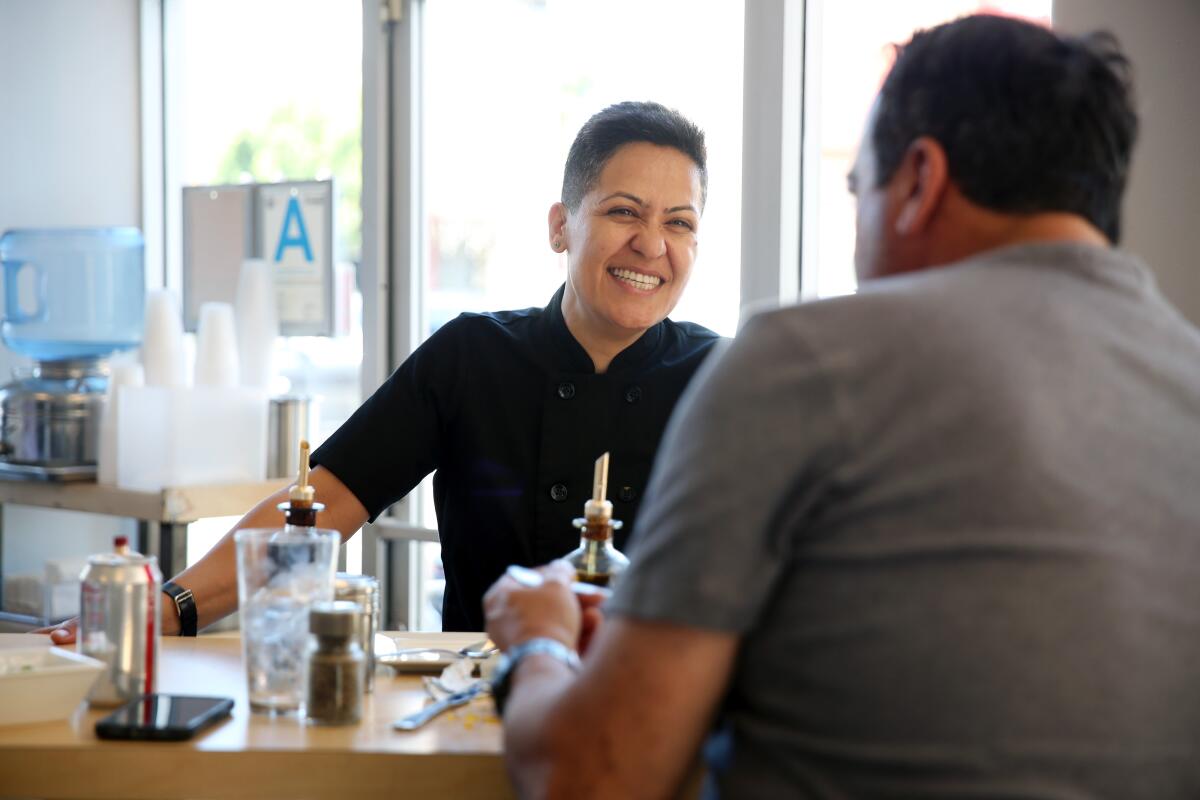
Koobideh kebabs — an Iranian classic of ground meat shaped with distinctive finger-width indentations — were the comparative standard Helou and I ordered from restaurant to restaurant. The exemplar at Taste of Tehran showed a master’s touch, the grated onion in the tender-singed beef added in just the right proportions, every bite vibrantly seasoned. Same for the still-rosy filet shish kebab and the lemony grilled chicken. Mast-o-khiar (yogurt mixed with chopped cucumber and mint) and mast-o-mousir (yogurt with shallot; amazing with the fluffy rice and kebabs) found a silky medium, neither gluey nor watery like so many versions we encountered.
For a snug space, it delivered primo people-watching: a grandmother doting on her two grandchildren while the mom distributed plates of chicken; a straight-backed man carefully composing balanced forkfuls of grilled trout, rice and tomato. The restaurant’s name may hearken back to Fanisalek’s native land, but this is a quietly wonderful way to taste — and experience — the best of Tehrangeles.
1915 Westwood Blvd., Los Angeles, (310) 470-0022, tasteoftehran.com
Attari Sandwich Shop/Attari Grill
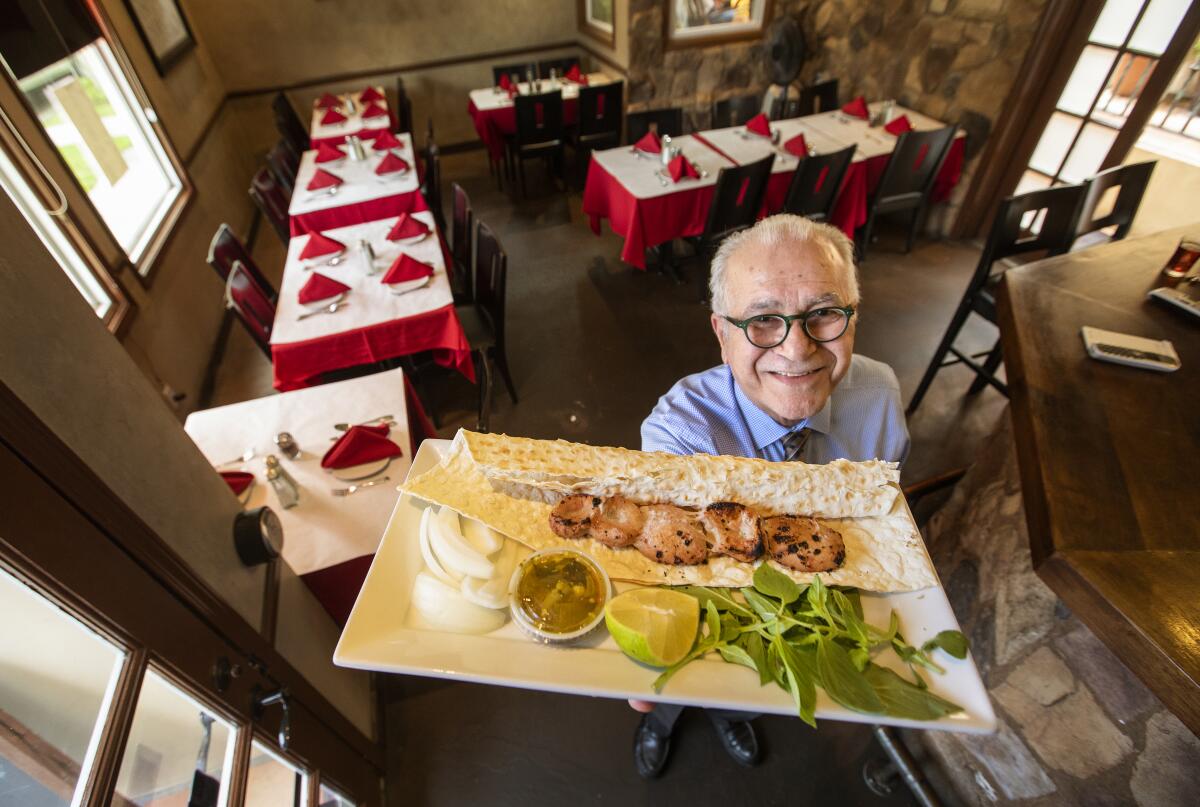
The sandwich shop, with its signatures such as thinly sliced beef tongue with pickles on a soft French roll, is a Westwood mainstay. But the next-door grill has a more comfortable setting and a handful of distinguishing specialties, including sabzi polo mahi (fried trout with herbed rice), a vision of greenness that’s traditionally served at Nowruz, the Persian New Year celebrated in the spring. Helou pointed out that even the walnut halves on a side plate of herbs had been soaked to properly revive them.
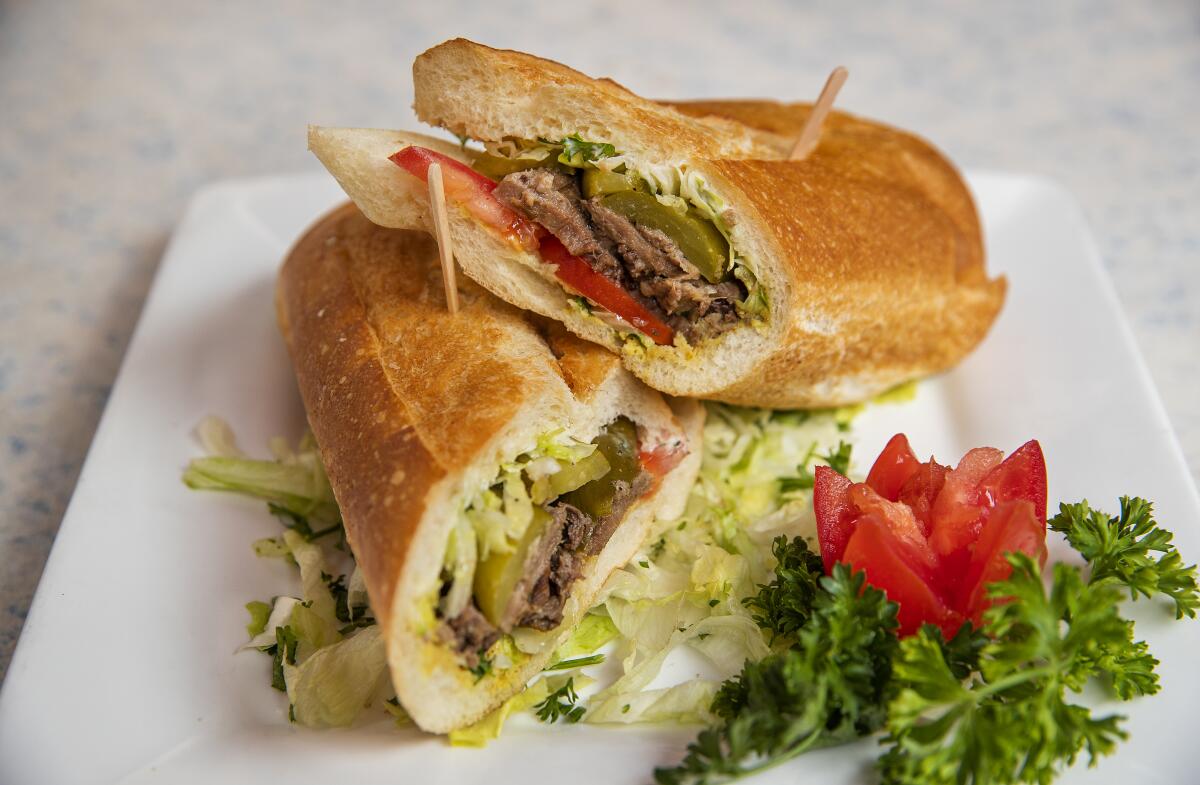
I was on the lookout for a superlative version of kuku sabzi, an herb-dense egg dish similar to a frittata that’s also a requisite at Nowruz. I didn’t find my ideal, honestly, but the one at Attari came the closest. The kebabs are solid, the donbalan being the front runner. Our soft-spoken, septuagenarian server blushed when we asked him to translate that word; Helou immediately understood it was lamb’s testicles when she saw his embarrassment. He charmed us both madly.
1388 Westwood Blvd., Los Angeles, (310) 441-5488, atarisandwiches.info
Hen House Grill
“Do you want to mash the ab-goosht, or would you like us to do it?” asked the man at the counter taking our order.
“Oh, we’ll do it,” Helou said instantly.
We’d requested dizi, a dish named for the traditional vessel in which to serve the ab-goosht, a tomato-laced lamb and chickpea stew. Helou knew the ritual: Begin by draining the stew’s broth into a bowl, and then mixing in torn pieces of accompanying flatbread. Then, with a masher made to fit the size of the dizi, smoosh the lamb and beans into a texture somewhere between coarse and smooth; there’s no one correct consistency. The ceremony, and the earthy goodness of the separate components, felt wholly nourishing.

Many of the stews we sampled during our trek tasted one-dimensional, but a bowl of ghormeh sabzi (beef, kidney beans and herbs) had a whole dried lime animating the dish with its unique, musky-pungent sourness.
The counter area at Hen House Grill feels rather lifeless — but walk out to the patio and, then, aha, here’s the heartening scene: young parents and their children, gatherings of women and couples, pouring the broth from their dizi, nodding approvingly at the juiciness of their kebabs, sipping strong tea with a distant scent of cardamom.
4515 Campus Drive, Irvine, (949) 786-2000, henhousecampus.com
Nersses Vanak
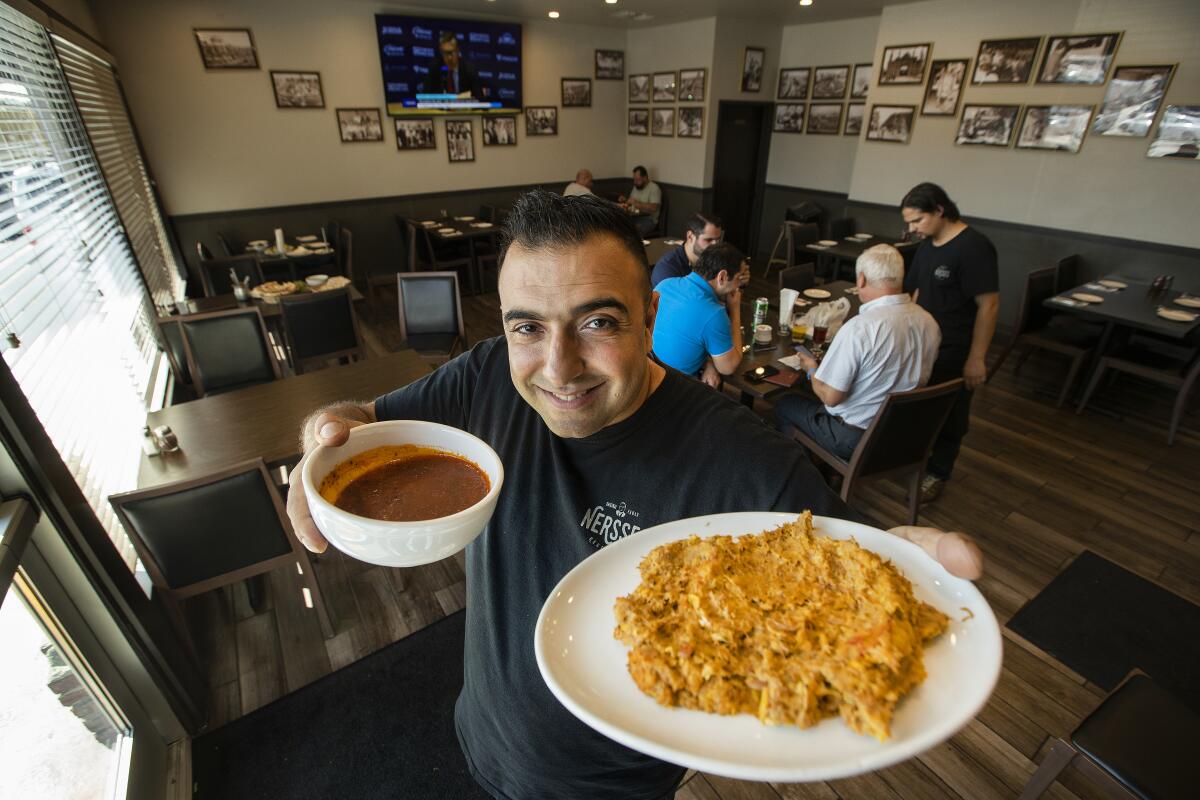
If you live closer to Glendale than to Irvine, this handsomely spare restaurant is your destination for dizi; the version here brings the lamb-rich umami depth, a truth noted in a 2016 review by Jonathan Gold. After Helou engaged co-owner Romik Abediyan in conversation, asking him about his preferred texture of mashed ab-goosht (he pounded it for us at the table to a near puree), he carried over a side of seer torshi — small whole heads of pickled garlic, a specialty of coastal Gilan province in northern Iran. Some versions age for a decade or more to be spreadable like cheese; this one was young, but its intensity sliced straight through the stew’s meatiness. As a contrast to the stew, sturgeon over dilled rice is terrific in its simplicity.
6524 San Fernando Road, Glendale, (818) 550-7800, nersses.com
Shamshiri Grill
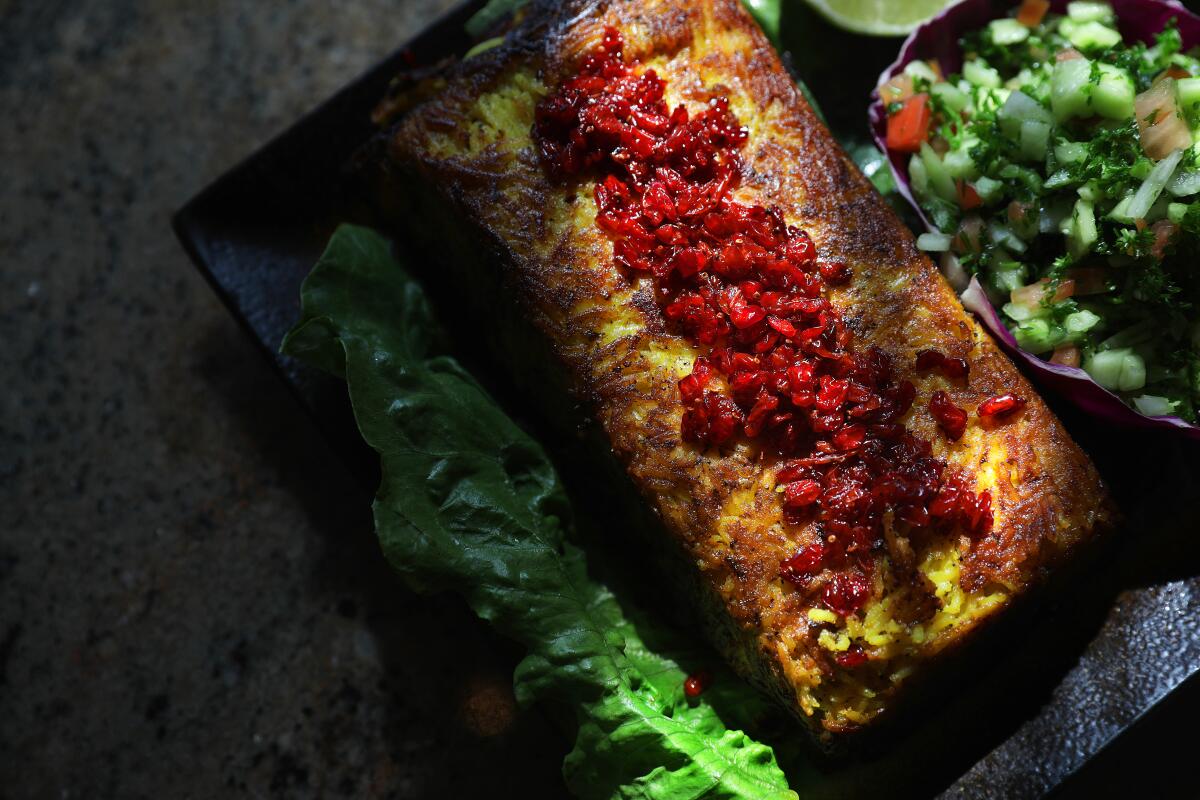
Our pick among the larger, older-guard Westwood kebab houses. Helou’s inquisitiveness seemed to irk our surly server, who disappeared for long stretches, but he couldn’t diminish our appreciation of the cooking. Chefs tend the flames and the skewers behind a glassed-in grill; this is a fine place to splurge on pricier cuts of meat such as rack of lamb kebab. The menu, like the dining room, sprawls, so it is wise to zero in on the several specials available only a few days a week. It’s worth stopping by on Tuesday, Wednesday or Thursday for tahchin, a savory rice cake mixed with yogurt and egg, layered with chicken or lamb, baked and crowned with crimson barberries.
1712 Westwood Blvd., Los Angeles, (310) 474-1410, shamshiri.com
Worthy stops beyond restaurants:
Sangak at Wholesome Choice
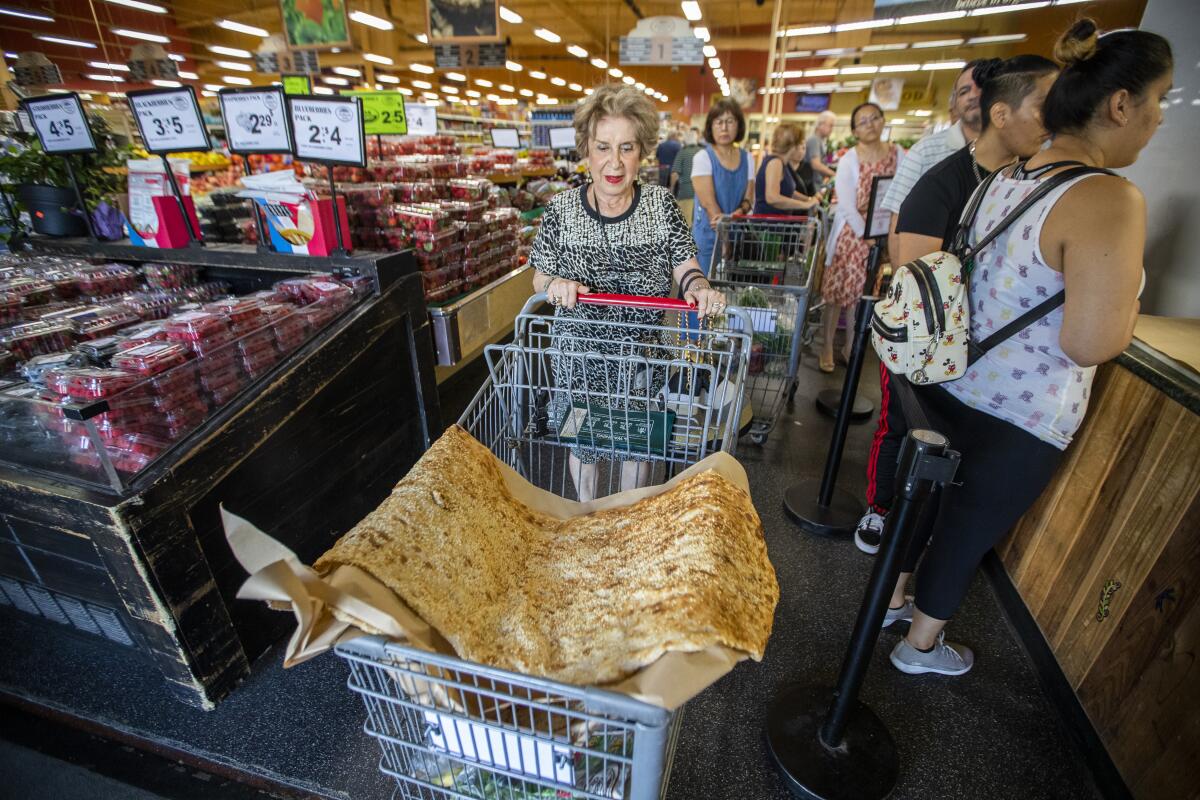
The food court of this Irvine grocery store serves kebabs and fragrant stews (and also pastas, shawarma and crepes) to a clamoring lunchtime crowd. The market’s true glory, though, is sangak, an Iranian whole-wheat flatbread freckled with sesame seeds; Helou has seen it baked over beds of stones. (Its name translates as “pebbles.”) A line usually forms for the charred, soft-crisp, 4-foot loaves. We draped ours over the front of a shopping cart and ripped off blistering hunks while we wandered the aisles — and we weren’t the only shoppers doing that.
18040 Culver Drive, Irvine, (949) 551-4111, wholesomechoice.com
Sweets at Rex Bakery
Boxes of cookies and pastries cram every square inch of table space at this no-frills Sawtelle bakery. It’s famous for cream puffs, but we most enjoyed the nan-e nokhodchi — finely crumbed, cardamom-scented cookies made with chickpea flour.
1659 Sawtelle Blvd., Los Angeles, (310) 445-8799
Ice cream at Saffron & Rose

A Westwood neighborhood staple — founder Haji Ali Kashani-Rafye arrived in America in 1974 — sees crowds throughout the day and until it closes well past dark. I admire how the shop groups its flavors, by fruit (date, pomegranate and sour cherry; a refreshing cucumber gets lumped in here), floral (jasmine and both pink and white rose; the latter is subtler) and chocolate and nutty (green pistachio, the ubiquitous cookies and cream). Faloodeh, threaded with thin noodles and scented extravagantly with rose water, and saffron-pistachio hew most closely to tradition, according to Helou. I’m a fan of the orange blossom variation; handily, orange blossom water doubles as a stomach-calming agent after a long, long day of eating.
1387 Westwood Blvd., Los Angeles, (310) 477-5533, saffronroseicecream.com
More to Read
Eat your way across L.A.
Get our weekly Tasting Notes newsletter for reviews, news and more.
You may occasionally receive promotional content from the Los Angeles Times.
